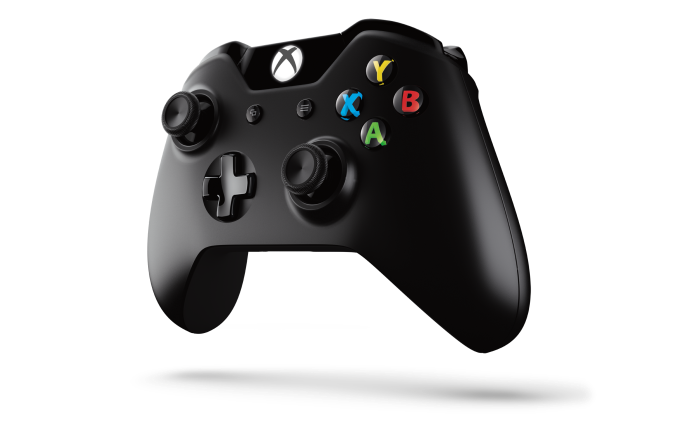The Xbox One: Hardware Analysis & Comparison to PlayStation 4
by Anand Lal Shimpi on May 22, 2013 8:00 AM ESTPower & Thermals
Microsoft made a point to focus on the Xbox One’s new power states during its introduction. Remember that when the Xbox 360 was introduced, power gating wasn’t present in any shipping CPU or GPU architectures. The Xbox One (and likely the PlayStation 4) can power gate unused CPU cores. AMD’s GCN architecture supports power gating, so I’d assume that parts of the GPU can be power gated as well. Dynamic frequency/voltage scaling is also supported. The result is that we should see a good dynamic range of power consumption on the Xbox One, compared to the Xbox 360’s more on/off nature.
AMD’s Jaguar is quite power efficient, capable of low single digit idle power so I would expect far lower idle power consumption than even the current slim Xbox 360 (50W would be easy, 20W should be doable for truly idle). Under heavy gaming load I’d expect to see higher power consumption than the current Xbox 360, but still less than the original 2005 Xbox 360.
Compared to the PlayStation 4, Microsoft should have the cooler running console under load. Fewer GPU ALUs and lower power memory don’t help with performance but do at least offer one side benefit.
OS
The Xbox One is powered by two independent OSes running on a custom version of Microsoft’s Hyper-V hypervisor. Microsoft made the hypervisor very lightweight, and created hard partitions of system resources for the two OSes that run on top of it: the Xbox OS and the Windows kernel.
The Xbox OS is used to play games, while the Windows kernel effectively handles all apps (as well as things like some of the processing for Kinect inputs). Since both OSes are just VMs on the same hypervisor, they are both running simultaneously all of the time, enabling seamless switching between the two. With much faster hardware and more cores (8 vs 3 in the Xbox 360), Microsoft can likely dedicate Xbox 360-like CPU performance to the Windows kernel while running games without any negative performance impact. Transitioning in/out of a game should be very quick thanks to this architecture. It makes a ton of sense.
Similarly, you can now multitask with apps. Microsoft enabled Windows 8-like multitasking where you can snap an app to one side of the screen while watching a video or playing a game on the other.
The hard partitioning of resources would be nice to know more about. The easiest thing would be to dedicate a Jaguar compute module to each OS, but that might end up being overkill for the Windows kernel and insufficient for some gaming workloads. I suspect ~1GB of system memory ends up being carved off for Windows.
Kinect & New Controller
All Xbox One consoles will ship with a bundled Kinect sensor. Game console accessories generally don’t do all that well if they’re optional. Kinect seemed to be the exception to the rule, but Microsoft is very focused on Kinect being a part of the Xbox going forward so integration here makes sense.
The One’s introduction was done entirely via Kinect enabled voice and gesture controls. You can even wake the Xbox One from a sleep state using voice (say “Xbox on”), leveraging Kinect and good power gating at the silicon level. You can use large two-hand pinch and stretch gestures to quickly move in and out of the One’s home screen.
The Kinect sensor itself is one of 5 semi-custom silicon elements in the Xbox One - the other four are: SoC, PCH, Kinect IO chip and Blu-ray DSP (read: the end of optical drive based exploits). In the One’s Kinect implementation Microsoft goes from a 640 x 480 sensor to 1920 x 1080 (I’m assuming 1080p for the depth stream as well). The camera’s field of view was increased by 60%, allowing support for up to 6 recognized skeletons (compared to 2 in the original Kinect). Taller users can now get closer to the camera thanks to the larger FOV, similarly the sensor can be used in smaller rooms.
The Xbox One will also ship with a new redesigned wireless controller with vibrating triggers:
Thanks to Kinect's higher resolution and more sensitive camera, the console should be able to identify who is gaming and automatically pair the user to the controller.
TV
The Xbox One features a HDMI input for cable TV passthrough (from a cable box or some other tuner with HDMI out). Content passed through can be viewed with overlays from the Xbox or just as you would if the Xbox wasn’t present. Microsoft built its own electronic program guide that allows you to tune channels by name, not just channel number (e.g. say “Watch HBO”). The implementation looks pretty slick, and should hopefully keep you from having to switch inputs on your TV - the Xbox One should drive everything. Microsoft appears to be doing its best to merge legacy TV with the new world of buying/renting content via Xbox Live. It’s a smart move.
One area where Microsoft is being a bit more aggressive is in its work with the NFL. Microsoft demonstrated fantasy football integration while watching NFL passed through to the Xbox One.














245 Comments
View All Comments
bplewis24 - Wednesday, May 22, 2013 - link
"the Xbox One is MORE about consuming media THAN it is about playing games."FTFY
twotwotwo - Wednesday, May 22, 2013 - link
I hope it's just weak marketing, but what worries me is that the non-gaming extras don't sound all that new or interesting. A compelling, if unlikely, possibility would be to sell an upgrade that sticks Pro-compatible Windows 8 on the non-XBox side. MS is already selling a portable computer; why not sell a desktop/HTPC, too?SymphonyX7 - Wednesday, May 22, 2013 - link
If this was Top Gear, Jeremy Clarkson would be busy saying unpleasant things about the Xbox One right now."MORE SPEED and POWER!!!"
Oddly enough, I dreamt the night before the Xbox One launch that the new Xbox had 16 GB of DDR4 RAM and shader count equivalent to Tahiti @ 1 Ghz. I hoped that Microsoft with their virtually bottomless pockets could someone improve on the leaked Durango and Orbis specs which didn't bode too well for Durango. I mean, Sony doubled the RAM from 4 to 8 GB. And it's GDDR5 to boot!
Sigh. One can only dream -- no pun intended.
nafhan - Wednesday, May 22, 2013 - link
Don't think anyone has mentioned this yet, BUT another reason why MS can have slightly lower specs than the PS4: XBO and PS4 are close enough that cross platform games are likely going to target the weaker platform. Sony will be spending money on more powerful hardware that will only be utilized in first party/exclusive games. Side by side comparisons will (in most cases) show minimal - if any - differences.inherendo - Wednesday, May 22, 2013 - link
Can someone explain to me what bluray dsp is. Curious as to what Anand meant but googling shows no info.Kiste - Wednesday, May 22, 2013 - link
That alway-on Kinect thing is really creeping the hell out of me.This THING is always watching. Always. Unblinking. And it can see you in the dark. It can hear you. It can even measure your heart rate just by looking at you! It has a huge HAL9000 eye staring at you.
It even LOOKS evil.
I really don't want this thing... looking at me.
tipoo - Wednesday, May 22, 2013 - link
It's silicon. It's anonymized. I don't get what everyone has a problem with. It's not like this is letting the evil gub'ment spy on you.scottwilkins - Wednesday, May 22, 2013 - link
One thing I think that the article failed to point out was that even though there is a 33% difference in hardware on GPU, there is NOT a 33% different in performance. As the GPU grows in parts, the gains go up logarithmically, not linear like this article suggests. I'd say there is likely less than a 10% performance gain on the PS4 part. Yet it will use almost twice the power, be much more hotter requiring more loud cooling. Yuck! Add to that the performance of the Windows kernel for processing, something Sony could never be able to match, I'd bet that they are probably almost equal in the end.scottwilkins - Wednesday, May 22, 2013 - link
I believe I should have said "reverse logarithmically" meaning more parts equal less gain. I'm sure you guys get the point. Sony is betting on tech specs and market power rather than real processing power.tipoo - Wednesday, May 22, 2013 - link
In the absense of another bottleneck like memory bandwidth, within GPUs adding shader cores is actually a pretty good indicator of performance. And it's not just 12 vs 18 CUs, the PS4 also has double the ROPs and 172GB/s for its entire pool of memory.